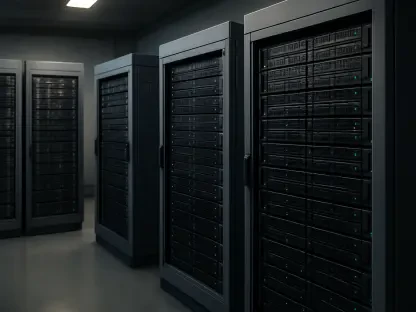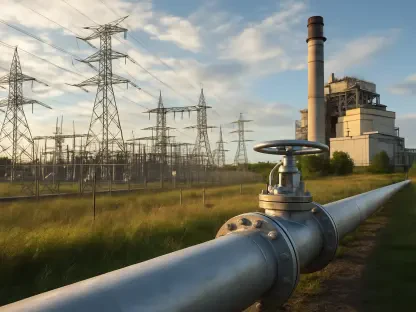As the energy sector grapples with rapid technological advancements and increasing demands on the power grid, few issues are as pressing as the interconnection of large loads like data centers. Today, we’re thrilled to sit down with Christopher Hailstone, a seasoned expert in energy management, renewable energy, and electricity delivery. With his deep knowledge of grid reliability and security, Christopher offers invaluable insights into the U.S. Department of Energy’s recent proposal on large load interconnections and the heated debate over federal versus state jurisdiction it has sparked.
Can you walk us through the core idea behind the Department of Energy’s proposal on large load interconnections?
Absolutely. The DOE’s proposal aims to have federal regulators, specifically the Federal Energy Regulatory Commission (FERC), establish standardized rules for connecting large loads—think massive power users like data centers—to the transmission system. The idea is to streamline the process and ensure consistency across regions, especially as demand for electricity from these facilities skyrockets. The DOE also suggests principles like making these large loads cover the full cost of network upgrades they trigger, and ensuring reliability studies are done if existing power plants are tapped to serve them.
What types of facilities are we talking about when we refer to ‘large loads’ in this context?
Large loads typically include facilities that consume a significant amount of electricity, far beyond your average commercial or residential user. Data centers are the poster child here—they power the internet, cloud computing, and AI, and their energy needs are enormous. But it could also cover large industrial operations, manufacturing plants, or even hybrid setups where power generation and consumption are co-located. These are facilities that can strain the grid if not integrated carefully.
Why does the DOE believe federal oversight is necessary for connecting these large loads to the grid?
The DOE argues that the current patchwork of state-by-state rules creates inefficiencies and delays, especially for industries like tech that need to scale up quickly. They see a federal framework as a way to standardize the process, improve coordination, and ensure the grid can handle these massive new demands without compromising reliability. There’s also a sense of urgency—data centers and similar facilities are multiplying, and without clear rules, there’s a risk of bottlenecks or even grid instability.
Why are state regulators and lawmakers so concerned about this proposal potentially overstepping their authority?
States are worried because, historically, they’ve had control over retail load interconnections and end-use electricity sales under the Federal Power Act. This proposal feels like a federal power grab to them. Groups like the National Association of Regulatory Utility Commissioners argue that FERC stepping in could disrupt state processes for balancing rates among customer classes and undermine their ability to manage local energy needs. It’s about losing control over decisions that directly affect their constituents.
How does the current division of power between states and the federal government work under the Federal Power Act?
The Federal Power Act draws a pretty clear line. States have jurisdiction over retail load interconnections—no matter how big the load—and over the sale of electricity to end users. Meanwhile, FERC oversees wholesale power markets and interstate transmission. This split ensures states can tailor policies to local needs, while the feds handle broader, cross-state issues. The concern with the DOE’s proposal is that it blurs this line by potentially pulling retail load connections under federal purview.
What specific roles do states play in managing retail load connections, and how might federal involvement disrupt that?
States are responsible for approving how and where retail loads connect to the grid, setting rates for different customer groups, and ensuring that local utilities can meet demand without unfair cost shifts. If FERC starts setting rules for large loads, it could override state decisions on rate structures or connection approvals, potentially skewing the balance states maintain between, say, residential and industrial users. It risks creating a one-size-fits-all approach that might not fit local realities.
How could federal rules for large load interconnections impact the way states manage rates for different customers?
States carefully balance rates to ensure fairness—residential customers aren’t overcharged to subsidize big industrial users, for instance. If FERC takes over jurisdiction for large loads, it could impose rules or cost allocations that conflict with state rate designs. This might lead to cost shifts where smaller customers end up bearing the burden of upgrades needed for large loads, which is a big concern for state regulators trying to protect their ratepayers.
What are some of the reliability concerns raised by state lawmakers regarding federal oversight of large load connections?
State lawmakers, through groups like the National Conference of State Legislatures, are asking tough questions about how federal oversight would address an already strained power supply. They’re worried about who would be responsible for managing reliability risks if a large load overwhelms the grid. States currently factor local conditions into their planning, but a federal approach might miss those nuances, potentially leading to blackouts or other disruptions.
How do grid operators like PJM Interconnection view the potential for federal involvement in this space?
PJM Interconnection, which manages a large regional grid, is cautious. They’ve warned that directing regional transmission organizations to create specific queues for large load interconnections could lead to lawsuits and uncertainty over who has jurisdiction. Instead of broad federal rules, PJM suggests FERC focus on issues clearly within its scope—like resource adequacy, transmission planning, and cost allocation—to avoid legal battles and confusion.
What’s your take on the perspective from investor-owned utilities about using existing power plants to serve new large loads?
The Edison Electric Institute, representing investor-owned utilities, supports the DOE’s call for reliability studies when existing power plants are used to serve new large loads. They’re concerned about resource adequacy—basically, ensuring there’s enough power to go around. Taking generation off the grid for a new data center, for example, could jeopardize supply for other customers. They’re pushing for reforms to guarantee additional generation is available and for large loads to pay their fair share for transmission system use.
Looking ahead, what’s your forecast for how this tension between federal and state jurisdiction over large load interconnections might play out?
I think we’re in for a prolonged tug-of-war. States are fiercely protective of their authority, and many stakeholders—like grid operators and utilities—are signaling discomfort with a heavy federal hand. On the other hand, the rapid growth of large loads means some standardization might be inevitable to prevent gridlock. My forecast is that we’ll see a compromise—perhaps a federal policy statement rather than strict rules, guiding the process while leaving room for state flexibility. But getting there will likely involve intense debate and possibly legal challenges over the next few years.









